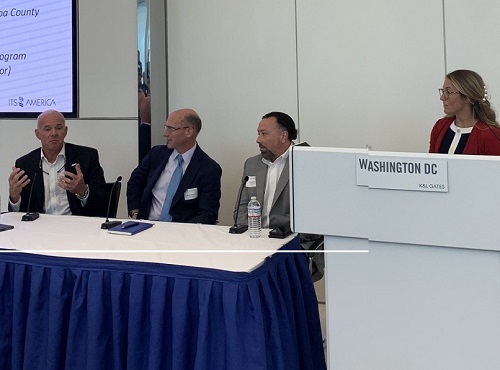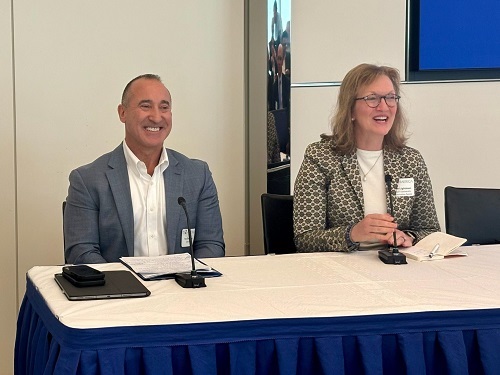Two state department of transportation leaders addressed a variety of technology issues during panel discussions at the inaugural policy summit held by the Intelligent Transportation Society of America September 11-12 in Washington, D.C.
[Above photo by ITS America]
Carlos Braceras – executive director of the Utah Department of Transportation and a former president of the American Association of State Highway and Transportation Officials – stressed that technology “must have a purpose” when it is deployed to improve the mobility needs of United States.

“Our purpose as state departments of transportation is to improve quality of life – to get people and goods to where they want to go, how they want to go, in the safest way possible. We connect people and communities together. That is purpose of what we do,” he explained.
“So technology is a nice tool to have to fulfill that mission, but it must have a purpose – it should help achieve our desired outcomes faster, with more efficiency and greater safety.”
Braceras also noted that, wherever technology is deployed in transportation, the first concern has to be the privacy of data.
“We always have to start from that perspective, because if the concern becomes that someone is tapping into that data to watch you, that will be become that [technology’s] story – and thus we will lose control the story,” he said. “So to help the public understand how technology will improve safety and mobility for them, we must always lead with our first principle; and that is how protect personal data.”
Meanwhile, Tony Tavares – director of the California Department of Transportation, known as Caltrans – stressed that the benefits of technology often far outweigh potential negatives; especially when it comes to improving safety.

“I am an optimist by nature and I see a lot of potential with AI [artificial intelligence],” he explained. “We are looking at using AI to analyze crash patterns on our highway corridors as AI can analyze and provide recommendations faster than humans can.”
He added that AI can also help states improve freight flows as well by, for example, using AI to optimize cargo routes used by trucking companies.
He also believes AI will play a critical role in helping Los Angeles become “car free” for the 2028 Olympics. “I think we can do it with AI, as it will allow us to optimize transit systems and [other] transportation movements and routes,” Tavares noted.
Like Utah DOT’s Braceras, though, he stressed that data protection needs to continually be a front and center concern for all transportation providers.
“AI has been used to create ‘deep fakes,’ and that has created distrust of this and other technologies,” Tavares explained. “So we need to ensure we keep personal data private and secure at all times.”
He also addressed another concern within the industry: that AI may one day replace the transportation workforce.
“No; we are going to need human engineers, planners, etc., to look at the outputs AI gives us so we can determine if they are actually feasible,” Tavares emphasized. “We will always need that human component. That will also ensure AI outputs address the needs of rural, urban, and communities of color in our transportation planning process as well.”
 Top Stories
Top Stories
Modal Administrators Speak at AASHTO Annual Meeting
December 5, 2025 Top Stories
Top Stories

